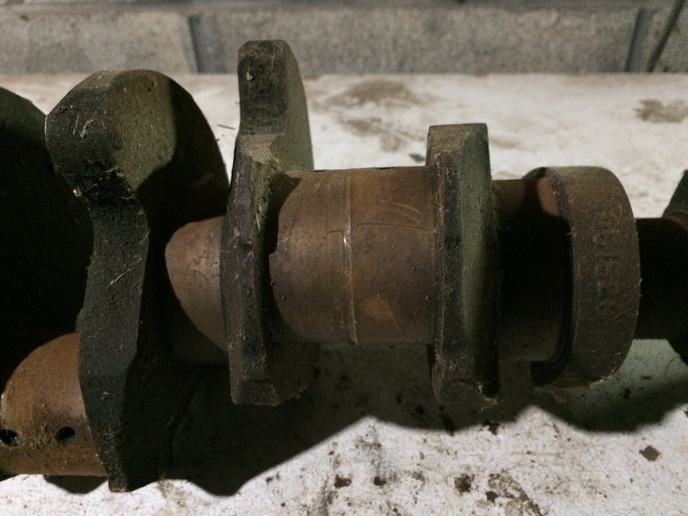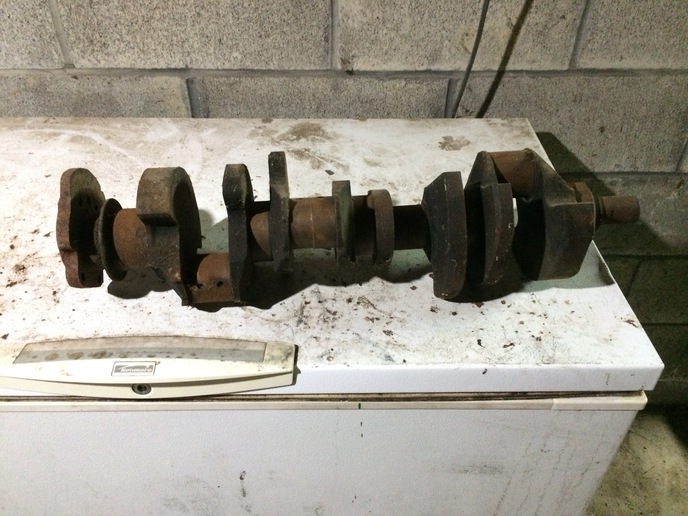First this isn't tractor related, stop reading now. I inherited a 57 chevy from my brother. My brother always wanted to get it going again, but the pills took him over. The car has sat for years. I would like to get it running again, if I live long enough. Back in the day he ordered a crate motor, I remember it as a 327. Can these crate motors be ordered with sped equipment, because the car was very fast. It had a four speed trans. It wasn't a car to go for a Sunday drive. The carb is missing. What carb should I be looking for to replace the missing single carb. I wasn't into fast cars back then. I was just able to keep one running to drive to work. Stan
You are using an out of date browser. It may not display this or other websites correctly.
You should upgrade or use an alternative browser.
You should upgrade or use an alternative browser.
- Thread starter 37 chief
- Start date
fastfarmall
Well-known Member
I went to a car show in DeMoines many years ago and got a book from Cheverlet,you could then, they had everything you wanted , and could order it, but that was 23 years ago ! So how the frame now, will it take high HP, or is it rusted bad ?? There is a another company that used to build the eqivalint to the Camel back heads!
I had many 327s. Most came from the factory with Rochester 4GC carbs. For a crate motor, and not knowing the year, who know? Many of the newer 327s had Rochester Quadrajets instead of the 4GC. Best thing is, open the hood and look. I had a 1968 Corvette with the 300 horse 327 and it came from the factory with the Quadrajet, model R3810. It was also available with a Holley.
Who knows.
Crate motor could be anything but "crate motors" did not become available until long after the 327 was no longer produced. Most likely a 350.
250 HP, regular fuel 327s were equipped with small (torque) heads, cast pistons, rods and crankshaft and a Rochester 4GC carburetor. HP 300 HP 327s were equipped with forged crankshafts, rods and pistons (flat top), a single Carter AFB carburetor with cast iron intake manifold and 1.94 double hump heads. SHP 327s were equipped with forged crankshafts, rods, pistons (pop up) and 2X4 Carter AFBs with an aluminum intake manifold. Exhaust manifolds, pipes, mufflers and tailpipes were larger on 300 and higher HP 327s. The last SHP 327s, e.g., 350 HP, etc., were equipped with Holley carburetors.
Inspect the intake manifold. If it truly was a crate motor, it almost certainly came with an aluminum intake manifold designed for a Holley carburetor. Unless it has 2.02 heads (unlikely), headers, and a very big camshaft (again unlikely) a 550-600 CFM carburetor with vacuum secondaries would be about right.
Dean
Crate motor could be anything but "crate motors" did not become available until long after the 327 was no longer produced. Most likely a 350.
250 HP, regular fuel 327s were equipped with small (torque) heads, cast pistons, rods and crankshaft and a Rochester 4GC carburetor. HP 300 HP 327s were equipped with forged crankshafts, rods and pistons (flat top), a single Carter AFB carburetor with cast iron intake manifold and 1.94 double hump heads. SHP 327s were equipped with forged crankshafts, rods, pistons (pop up) and 2X4 Carter AFBs with an aluminum intake manifold. Exhaust manifolds, pipes, mufflers and tailpipes were larger on 300 and higher HP 327s. The last SHP 327s, e.g., 350 HP, etc., were equipped with Holley carburetors.
Inspect the intake manifold. If it truly was a crate motor, it almost certainly came with an aluminum intake manifold designed for a Holley carburetor. Unless it has 2.02 heads (unlikely), headers, and a very big camshaft (again unlikely) a 550-600 CFM carburetor with vacuum secondaries would be about right.
Dean
Steve@Advance
Well-known Member
That you suspect the bottom end is not stock is going to make selecting heads very difficult, especially if it has unknown high compression pistons.
You also need to know what type cam, the lift and duration specs, and if it is solid or hydraulic.
Any small block heads will fit that were used with a carburetor manifold. But there are many different valve and chamber sizes, which needs to be matched to the pistons and cam for the correct compression ratio.
If you have any paper work on the engine it would be a huge help. Look specifically for a build sheet.
As for a carburetor, my suggestion would be none! Go with an aftermarket throttle body fuel injection. They are a little more expensive, and a little more installation, but it's going to be the only practical solution for a car that is not going to be driven on a daily basis.
If you do go with a carb, Quadrajet was my favorite, because I knew them and had all the jets and rods and springs to make one work. There were also Carters, Edelbrock, original Rochester's.
And so many Holleys... Absolutely detestable! Hard to tune, reputation for leaking gas, sold by the millions in the wrong application. They contain internal and external diaphragms which don't like ethanol! Leak internally and externally.
But no carburetor can be expected to work reliably sitting with ethanol in it. Period!
You also need to know what type cam, the lift and duration specs, and if it is solid or hydraulic.
Any small block heads will fit that were used with a carburetor manifold. But there are many different valve and chamber sizes, which needs to be matched to the pistons and cam for the correct compression ratio.
If you have any paper work on the engine it would be a huge help. Look specifically for a build sheet.
As for a carburetor, my suggestion would be none! Go with an aftermarket throttle body fuel injection. They are a little more expensive, and a little more installation, but it's going to be the only practical solution for a car that is not going to be driven on a daily basis.
If you do go with a carb, Quadrajet was my favorite, because I knew them and had all the jets and rods and springs to make one work. There were also Carters, Edelbrock, original Rochester's.
And so many Holleys... Absolutely detestable! Hard to tune, reputation for leaking gas, sold by the millions in the wrong application. They contain internal and external diaphragms which don't like ethanol! Leak internally and externally.
But no carburetor can be expected to work reliably sitting with ethanol in it. Period!
First complete engine packages from GM that I recall were the blue Target Master series of 350s. Mid 1970s and most I saw were made in Mexico. None that I ever came across were high performance engines. I think a 9 to 1 compression ratio was about as high as they came. Maybe when the black Goodwrench series took over they offered more choices.
used red MN
Well-known Member
- Location
- Coon Rapids, MN
You can get just about anything your pocket book can stand for that engine. The 265 small block introduced in 1955 maintained its dimensional architecture through the 283, 305, 327, 350 & 400....and others...through 1997. Of course some minor variations along the way but not like a Ford...this is a Windsor, no a Cleveland maybe a Modified. Also the big block engines 396, 402, 427 and 454 will bolt up to the same bell housing. You want it to be fast and a nice Sunday driver as well put a later model LS engine in it, of course that would take more dollars. I have a 57 Bel Air 2dr hardtop. Need to revive it from its basket case status one of these days.
"sold by the millions in the wrong application" I'd certainly say so.
Years ago, I straightened out a build that a girl had done on a 350 in a 70's corvette. What they did was ridiculous, it had dome top pistons, with some ridiculously high lift cam, and compression like 12:1 ? It's been too long to remember precisely. It had roller rockers and they did not even pin those, the thing was a disaster that I don't think could run on regular gas. It had a Holley 750 double pumper ! This thing was sending black soot out like a diesel engine ! It had the headers and side pipes.
I took the engine out, had it re-worked and everything toned down to something manageable, by someone who was doing my friends drag race car engines. I think we jetted the carb down as well. I put a hot ignition system into it as well. I took some doing to get it tuned right, once done it ran very nicely, probably in the 300 HP range, and was reliable. I had 80 some odd hours into this thing, cleaned and painted the frame, replaced every U-Joint, made sure all the grease fittings aligned so all were accessible at one time. I had the trans done by one of the best old school guys around. What a project, when done, she was a lot happier with it, it ran right, had plenty of punch when you hit it, and was not the ridiculous poorly done overkill build, which also took her to the cleaners. It would have come apart there is no doubt. I had just done a 350 replacement in my K10 pick-up, stock build, then did this one right after it. Small block chevy engines were always fun !
Years ago, I straightened out a build that a girl had done on a 350 in a 70's corvette. What they did was ridiculous, it had dome top pistons, with some ridiculously high lift cam, and compression like 12:1 ? It's been too long to remember precisely. It had roller rockers and they did not even pin those, the thing was a disaster that I don't think could run on regular gas. It had a Holley 750 double pumper ! This thing was sending black soot out like a diesel engine ! It had the headers and side pipes.
I took the engine out, had it re-worked and everything toned down to something manageable, by someone who was doing my friends drag race car engines. I think we jetted the carb down as well. I put a hot ignition system into it as well. I took some doing to get it tuned right, once done it ran very nicely, probably in the 300 HP range, and was reliable. I had 80 some odd hours into this thing, cleaned and painted the frame, replaced every U-Joint, made sure all the grease fittings aligned so all were accessible at one time. I had the trans done by one of the best old school guys around. What a project, when done, she was a lot happier with it, it ran right, had plenty of punch when you hit it, and was not the ridiculous poorly done overkill build, which also took her to the cleaners. It would have come apart there is no doubt. I had just done a 350 replacement in my K10 pick-up, stock build, then did this one right after it. Small block chevy engines were always fun !
used red MN
Well-known Member
- Location
- Coon Rapids, MN
To answer your question...Can these crate motors be ordered with sped equipment, because the car was very fast?... in a that was then this is now sort of way. See link.
Current GM Small Block Chevy performance packages
Current GM Small Block Chevy performance packages
ell, over the years, there were many, many combinations. As for carbs, they are like another part of all our bodies that everybody has one of. I have worked all of them over many years & My opinion is, AFB the best, some other Carters OK, Quadrajunk bad, Holley the worst!(quoted from post at 22:25:37 04/25/20) Dean. It could be a 350. There must be a number on the motor that I can look up. But where? Stan
Fight on boys! :twisted:
First determine what you want the car to be, then select the engine. Some people keep them bone stock and original as possible, some want a period correct race car, others want a modern car with a modern chassis under the original sheet metal, some want a one of a kind custom creation.
Goose
Well-known Member
You're right!
They were fun. Before Chevy came out with the 302, I bored a 283 block .125, put 327 pistons in it, fuelie heads, and dropped it into a '56 Chevy stock car. It figured 301.44 cubic inches. Talk about a little screamer!
A local half mile dirt track had a 307 cubic inch limit back then, which limited Chevy's to 283's, except us. We won frequently there for a year or so and then upgraded to the Late Model class, which required stock sheet metal within the last 5 model years.
They were fun. Before Chevy came out with the 302, I bored a 283 block .125, put 327 pistons in it, fuelie heads, and dropped it into a '56 Chevy stock car. It figured 301.44 cubic inches. Talk about a little screamer!
A local half mile dirt track had a 307 cubic inch limit back then, which limited Chevy's to 283's, except us. We won frequently there for a year or so and then upgraded to the Late Model class, which required stock sheet metal within the last 5 model years.
Yes they were, I have a 84 k20 had a 350 w 4 speed, with the granny gear, had 3:46 axel I think it was, real dog pulling a trailer up steep hills. My friend said put a 400ci in it, well I found a friend that had one out of a 77 pickup, his kid ran it low on oil and spun a bearing, got it for $200 back in 1998, we?ll it cost a small fortune to rebuild it, needed a pistons, rods, externally balanced flywheel, heads crank, 4 core radiator, ect, I put on Edelbrock carb, and intake manifold, hooker or headman headers can?t remember. I put the engine in, pre lube it with a drill, start it and it?s knocking!!! Wow? What the??? Pull engine back out and find studs or bolts I can?t remember, on the back of clutch were to long and hitting something, so we ground them down put engine back in, good to go, that 400 was a nice engine, plenty of torque. I like it a lot. Well now iv got a diesel! Lol, I always liked Chevy small blocks. So easy to work on, even a cave man could do it!! Lol, those were fun days
MarkB_MI
Well-known Member
- Location
- Motown USA
> The manifold has a large oval on one side, and two large holes in front of the oval. Stan
So that means it takes a "spread bore" carburetor such as the original Rochester Quadrajet or an aftermarket direct replacement. I wouldn't hesitate to install a junkyard Quadrajet; they're pretty reliable carbs and it shouldn't be too difficult to find one that fits. Once you have it running you can switch out the carburetor if you think it's necessary. I would stay away from the Holley "double-pumper" carbs; they have to be closely matched to the engine. The vacuum secondary "single pumper" Holleys are a better choice for most applications.
So that means it takes a "spread bore" carburetor such as the original Rochester Quadrajet or an aftermarket direct replacement. I wouldn't hesitate to install a junkyard Quadrajet; they're pretty reliable carbs and it shouldn't be too difficult to find one that fits. Once you have it running you can switch out the carburetor if you think it's necessary. I would stay away from the Holley "double-pumper" carbs; they have to be closely matched to the engine. The vacuum secondary "single pumper" Holleys are a better choice for most applications.
M-MAN
Well-known Member
- Location
- Bostic, NC
Not only could you get crate motors from the factory, they were available from performance shops as well. I remember when Holman Moody was doing away with their 427 Ford inventory in the early seventies. $800 would get you the same crate engine they had built for Nascar.
They were easy to work on and learn. In this same K10, I pulled the automatic transmission out, and replaced it with a standard from a low mileage, but rusted out old farm truck, mid 70's. I did this outside in one of the yards where I worked ! Cool thing was that I had a Napa, just over the fence and a heavy truck parts place just up the street, where I got the flywheel turned and other parts. It took some doing, a couple of Saturdays, but I drove it home one of those Saturdays. The truck was nothing really special, but I was up for the challenge. I still have the darned thing and it's a yard ornament, but with a very good drive train. I need to either get it going again, clean out the mouse invasion leftovers or get rid of it. Wasn't a bad yard plow truck, I just stopped using it. Kind of rusty, not road worthy. I think it's got prairie gears in it 270's I believe. I have the window sticker in a folder somewhere. The 350 I found was a fresh rebuild, ran pretty good.
When I had to move it from NJ, I just put some plates on it that I had and drove it all the way up the thruway, was nuts, but I made it and the speedometer was off by 10MPH with the trans change, will never forget that, just beat a thunderstorm when I got it here.
When I had to move it from NJ, I just put some plates on it that I had and drove it all the way up the thruway, was nuts, but I made it and the speedometer was off by 10MPH with the trans change, will never forget that, just beat a thunderstorm when I got it here.
dr sportster
Well-known Member
A google search will tell you where the numbers are . Most crate engines would be a 350 or stroker not 327.
I liked the Carter AFB carburetors but getting jets and metering rods was not easy for an 18 year old back in the 60s. Metering rods and springs could be easily changed externally, and the spring compensated secondary air valve was also easily adjusted externally.
I had a pair of AFBs on an Edelbrock C36 (IIRC) 2X4 intake on my 64 Impala SS with very highly modified 327. Progressive linkage. Could drive around all day on the front two venturis of the rear carb. Front carb was the front carburetor from a 2X4 409. It has no choke mechanism, idle circuits or secondary lock outs. 2X4 409 air cleaner bolted right on, and I fabricated an Oldsmobile W30 style ram air system with 6" air inlets made from furnace ducts mounted below the front bumper. They were big and caught lots of air at speed.
Quadrajet carburetors were wonderful performance carburetors for OEM applications. Economical small front venturis and very large secondaries. Kind of like having one's cake and also eating it.
Holleys were suitable only for high performance applications where economy didn't matter. Very uneconomical and would leak after a short while.
Dean
I had a pair of AFBs on an Edelbrock C36 (IIRC) 2X4 intake on my 64 Impala SS with very highly modified 327. Progressive linkage. Could drive around all day on the front two venturis of the rear carb. Front carb was the front carburetor from a 2X4 409. It has no choke mechanism, idle circuits or secondary lock outs. 2X4 409 air cleaner bolted right on, and I fabricated an Oldsmobile W30 style ram air system with 6" air inlets made from furnace ducts mounted below the front bumper. They were big and caught lots of air at speed.
Quadrajet carburetors were wonderful performance carburetors for OEM applications. Economical small front venturis and very large secondaries. Kind of like having one's cake and also eating it.
Holleys were suitable only for high performance applications where economy didn't matter. Very uneconomical and would leak after a short while.
Dean
Crazy Horse
Well-known Member
Jay ..... nice to see you're not the only guy who uses the top of their freezer as a temporary or overflow workbench. Years ago (after Momma laid the law down) I taped a piece of heavy duty cardboard on top with a bit of an upwards bend/flange at the back to prevent stuff from rolling off. Now and then I change out the cardboard and it works fine. Freezer is going on 47 years and hasn't missed a beat yet. Your lid handle is a bit more intrusive than mine is (mounted on the front edge).
I agree the Quadrajet can be made to preform. Takes a little knowledge and a little work. I used to fix a lot for people who had their friend rebuild. That rod from the secondary air valve has to be slipped when the two halves go together and a lot of people left them off. The choke pull off canister controls secondary air valve opening speed. You could tell a good quadrajet man at the dragsttip he would have a Number of choke pull off canisters in his tool box with The vacuum tubes trimmed to access the restriction inside.
The Chevrolet 327-cubic-inch V8 originated with the small-block family of engines that first appeared in 1955 with a 265 cubic inch powerplant. Following with a 283 cubic inch version that appeared in 1957, the mighty 327-inch small block made its debut in 1962.
So it came from the factory with a 283, the replacement may be a 327. If there are no engine codes stamped on the block then the only way to check is to pull the head and measure.
V8 codes are stamped on a pad just forward of the right side (passenger) cylinder head.
So it came from the factory with a 283, the replacement may be a 327. If there are no engine codes stamped on the block then the only way to check is to pull the head and measure.
V8 codes are stamped on a pad just forward of the right side (passenger) cylinder head.
wilson ind
Well-known Member
please define AFB
timcasbolt
Well-known Member
he Carter AFB was the aluminum four barrel. The AVS had air valve secondaries.(quoted from post at 11:49:17 04/26/20) please define AFB
AFB is the name for the Carter Aluminum Four Barrel carburetors common in the early/mid 60s.
Later Carter introduced a refined series with spring balanced air valve secondary venturis. These were somewhat larger and called AVS carburetors. They were very common on Chrysler HP engines. Both GM and Ford built their own carburetors and did not use the AVS series.
The secondary air valve in the AFB series carburetors were balanced by counterweight, making readjustment difficult.
Dean
Later Carter introduced a refined series with spring balanced air valve secondary venturis. These were somewhat larger and called AVS carburetors. They were very common on Chrysler HP engines. Both GM and Ford built their own carburetors and did not use the AVS series.
The secondary air valve in the AFB series carburetors were balanced by counterweight, making readjustment difficult.
Dean
You forgot the 302, one of the hottest engines ever produced by chevy. Chevy said 290 hp, any review of one in a 67 or 68 Camaro said it was closer to 390. And it didn't make the car nose heavy like if you put a big block in to get that hp. And unless you got the hot cam it could live on the street.
I've got a chest freezer, big one like that, same thing seems to happen at times, or there's something on it LOL !
It's been running since the late 70's.
Any horizontal surface seems to be fair game around here !
Bad habit too, as things accumulate over time. I'm at the stage of clearing said accumulation LOL !
It's been running since the late 70's.
Any horizontal surface seems to be fair game around here !
Bad habit too, as things accumulate over time. I'm at the stage of clearing said accumulation LOL !
Isn?t it something how we accumulate things! My problem is I have 6 of everything! Can?t keep it all going.
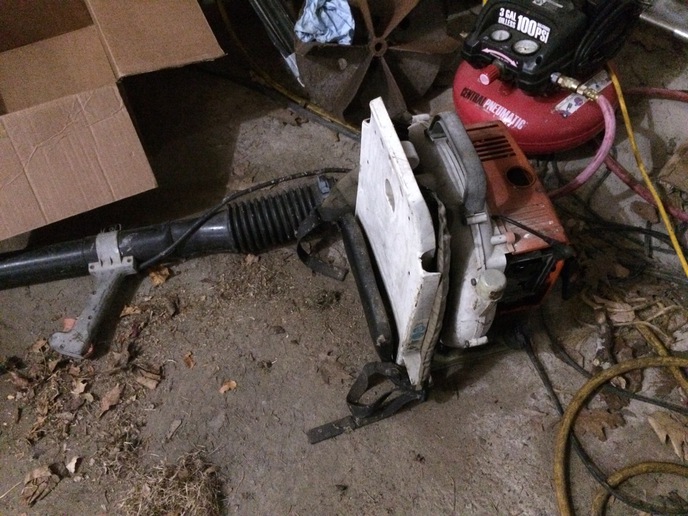
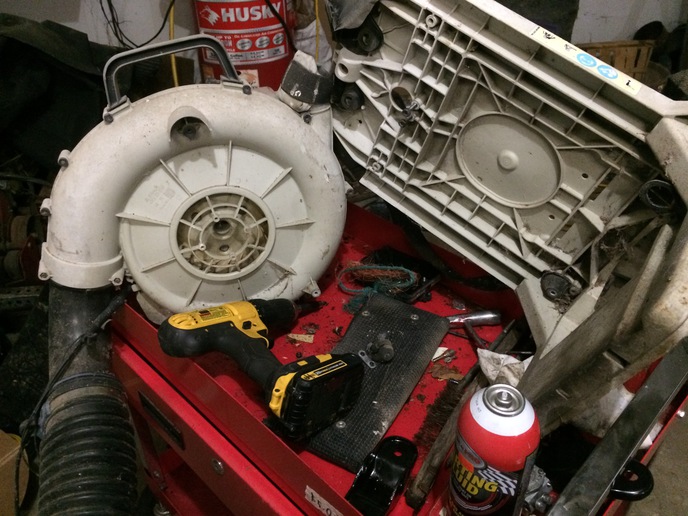
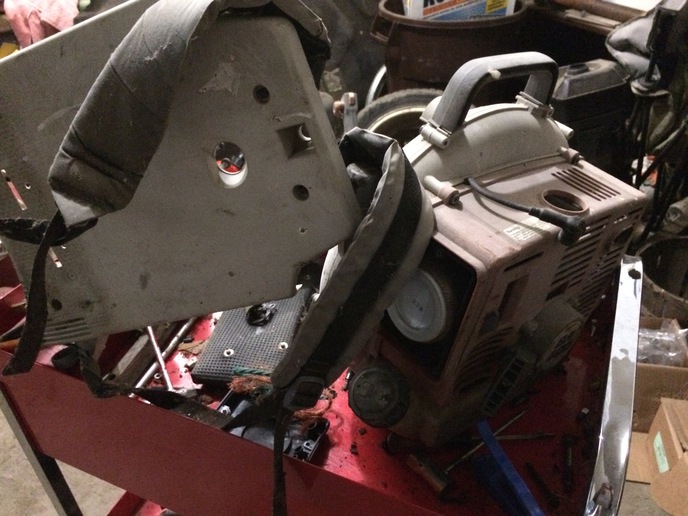
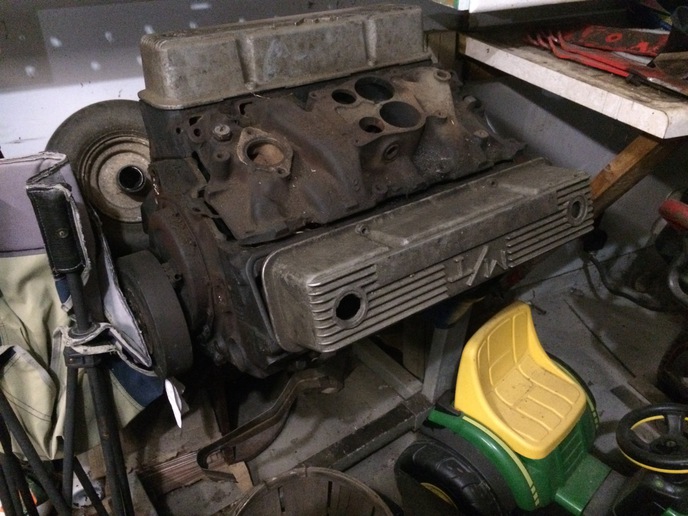
Just started fixing back pack blowers this week!
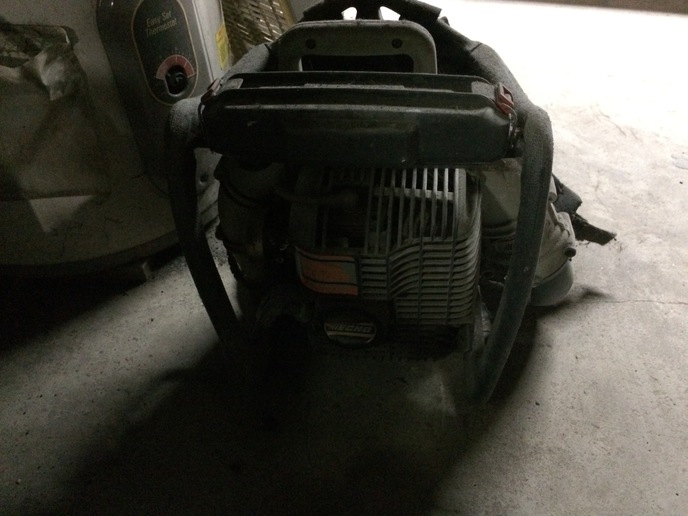
One stihl on the floor won?t start, the other one I ordered rubber mounts for it, I also have 2 old echos, one needs a coil, and carbs for both most likely, and there?s the 84 350 mouse sitting there!




Just started fixing back pack blowers this week!

One stihl on the floor won?t start, the other one I ordered rubber mounts for it, I also have 2 old echos, one needs a coil, and carbs for both most likely, and there?s the 84 350 mouse sitting there!
Could be, I had to have mine bored, boy I wish I could remember.10 or.30 over, don?t want to bore the 400 to much, cylinders are so thin to begin with, then you have the 2 center cylinders siameased , spelling. If you don?t overheat them, I think they were a good engine with a better bumpstick, intake and exhaust work. I hope to get mine running again🤔 someday.....
Over jetting Holly Carbs used to be common. I took the high compression small journal 327 out of my 69 Z28 for two reasons. I got tired of the correct police telling me it was the wrong engine and I got tired of hauling racing gas home for it. I built a fake large journal 302, has correct parts except for a 350 crank and 10 to 1 pistons, ok just a little more duration in the cam. But it runs on pump gas, a lot more fun. I would have Dumped that Holly, but it has the ordinal DZ carb and manifold and the correct police are still out there. That holly actually has pretty good to me.
Super H Mike
Member
Its funny but my list would be the exact opposite of yours ! I am the only one in my area still working on carbs.
timcasbolt
Well-known Member
302 with a 350 crank in it would be a 350.(quoted from post at 19:23:01 04/26/20) Over jetting Holly Carbs used to be common. I took the high compression small journal 327 out of my 69 Z28 for two reasons. I got tired of the correct police telling me it was the wrong engine and I got tired of hauling racing gas home for it. I built a fake large journal 302, has correct parts except for a 350 crank and 10 to 1 pistons, ok just a little more duration in the cam. But it runs on pump gas, a lot more fun. I would have Dumped that Holly, but it has the ordinal DZ carb and manifold and the correct police are still out there. That holly actually has pretty good to me.
stevieb49829
Well-known Member
- Location
- Spirit Lake, Idaho
Back to your original post: First thing is to check the VIN pad in front of the passenger-side head. Numbers stamped there mean it's probably NOT a crate motor. If you have numbers, post them and any number of us will tell you what you got to start with. The block casting numbers at the rear drivers side, above the bellhousing flange, as well as the casting numbers for date will start getting you in the ballpark, and are sometimes very specific. Post some numbers for us.
buickanddeere
Well-known Member
(quoted from post at 18:58:38 04/26/20) Could be, I had to have mine bored, boy I wish I could remember.10 or.30 over, don?t want to bore the 400 to much, cylinders are so thin to begin with, then you have the 2 center cylinders siameased , spelling. If you don?t overheat them, I think they were a good engine with a better bumpstick, intake and exhaust work. I hope to get mine running again someday.....
400's had to have the steam vent holes in the block and head gaskets line up with the steam vent holes in the heads.
A 400 crank in a 350 block with 6.0 rods is less trouble. 383 ain't shabby.
https://www.edelbrock.com/e-street-top-end-kit-for-s-b-chevy-2038.html
or
https://www.edelbrock.com/performer-rpm-top-end-kit-for-s-b-chevy-2098.html
Similar threads
- Replies
- 27
- Views
- 699
We sell tractor parts! We have the parts you need to repair your tractor - the right parts. Our low prices and years of research make us your best choice when you need parts. Shop Online Today.
Copyright © 1997-2024 Yesterday's Tractor Co.
All Rights Reserved. Reproduction of any part of this website, including design and content, without written permission is strictly prohibited. Trade Marks and Trade Names contained and used in this Website are those of others, and are used in this Website in a descriptive sense to refer to the products of others. Use of this Web site constitutes acceptance of our User Agreement and Privacy Policy TRADEMARK DISCLAIMER: Tradenames and Trademarks referred to within Yesterday's Tractor Co. products and within the Yesterday's Tractor Co. websites are the property of their respective trademark holders. None of these trademark holders are affiliated with Yesterday's Tractor Co., our products, or our website nor are we sponsored by them. John Deere and its logos are the registered trademarks of the John Deere Corporation. Agco, Agco Allis, White, Massey Ferguson and their logos are the registered trademarks of AGCO Corporation. Case, Case-IH, Farmall, International Harvester, New Holland and their logos are registered trademarks of CNH Global N.V.
Yesterday's Tractors - Antique Tractor Headquarters
Website Accessibility Policy


